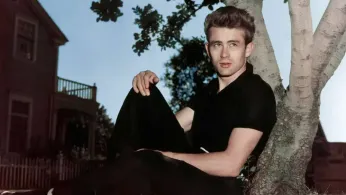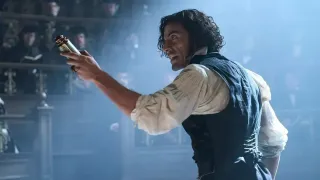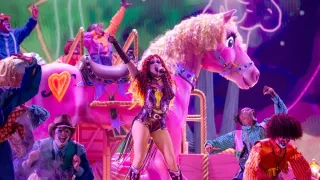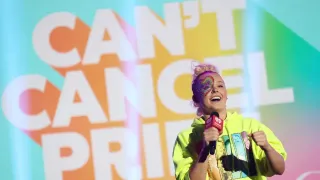
5 hours ago
James Dean and the Question of Sexuality: Untangling Fact, Rumor, and Queer Iconography
READ TIME: 4 MIN.
James Dean, the star of "Rebel Without a Cause" and emblem of mid-century American rebellion, died at just 24—leaving behind not only three seminal films but also a legacy of speculation about his personal life. Discussions about Dean’s sexuality have endured for seventy years, fueled by anecdotes, biographical claims, and Hollywood lore. Was James Dean gay, bisexual, or simply unconcerned with labels? The answer lies in a nuanced web of personal relationships, public statements, and the cultural constraints of 1950s America.
Even during his life, James Dean was the subject of gossip regarding his sexual orientation. Hollywood insiders and the media speculated about his relationships with men, especially after he became a household name. Dean’s association and cohabitation with Rogers Brackett, an older man who served as both mentor and intimate companion, has been well-documented. According to Ronald Martinetti’s 1975 biography and corroborated by letters, photographs, and testimony from their contemporaries, Dean and Brackett shared not only living quarters but also a deep emotional and physical bond. Brackett played a pivotal role in launching Dean’s career, but their partnership also involved a level of intimacy rarely afforded to queer couples of the time .
Dean’s relationships with men were not limited to Brackett. Biographers have recounted his sexual encounters with powerful men in the entertainment industry, often transactional and fraught with the exploitation that was rampant in Hollywood. According to William Bast, Dean’s close friend and confidant, Dean was open about such experiences, describing them as both necessary and dehumanizing .
At the same time, Dean dated numerous women—among them actress Pier Angeli and writer Liz Sheridan. Some sources claim he proposed marriage to as many as five women, actions that suggest either authentic romantic interest or an effort to maintain a heteronormative public image. According to correspondence and interviews with those who knew him, Dean often juggled relationships with women and men simultaneously, reflecting a personal life that defied easy categorization .
James Dean’s own statements about his sexuality were deliberately ambiguous and even provocative. When asked directly if he was gay, Dean famously replied, “No, I’m not homosexual. But I am also not going through life with one hand tied behind my back” . This answer neither confirmed nor denied any particular identity and instead subverted the rigid binaries of the era.
Dean’s refusal to be boxed in was unusual for his time, especially in an era when the so-called “celluloid closet” made it virtually impossible for actors to be openly queer without risking their careers. His studio, Warner Bros., worked hard to present him as a ladies’ man, placing him in staged photo opportunities with women and alongside other closeted stars like Rock Hudson and Tab Hunter .
Despite the pressure to conform, Dean’s actions and words suggested a more fluid understanding of sexuality. Accounts from peers like William Bast indicate that Dean viewed his relationships with men as a natural extension of his desires, not as something shameful or confusing . Yet, he was also pragmatic: he recognized the career risks and took steps to appear heterosexual when necessary.
James Dean’s relationship to queer identity cannot be separated from the context of 1950s America, when homosexuality was not only stigmatized but criminalized. Openly gay actors faced blacklisting and professional ruin. Against this backdrop, Dean’s willingness to live authentically—if not publicly—was quietly radical. Accounts suggest he participated in New York’s queer circles and maintained close ties with other LGBTQ+ individuals, even as he navigated the demands of Hollywood’s image machine .
Dean’s on-screen persona also contributed to his queer icon status. "Rebel Without a Cause," directed by Nicholas Ray, is widely interpreted as containing a queer subtext—an intentional choice by both Ray and Dean, according to film historians . The film’s exploration of masculinity, vulnerability, and nonconformity resonated with LGBTQ+ viewers who saw aspects of their own experience in Dean’s sensitive, rebellious characters.
In death, Dean became an enduring symbol for those who felt themselves outsiders: queer youth, artists, and rebels of all stripes. His refusal to adhere to strict gender or sexuality norms has been celebrated by generations of LGBTQ+ people, who see in Dean not only a movie star but a figure of possibility and resistance .
No single label can encompass the full complexity of James Dean’s sexuality. Verifiable evidence shows he had intimate relationships with both men and women, defied the era’s strict definitions, and left behind statements that muddle rather than clarify his orientation. Some biographers have claimed he was gay or bisexual; others point to his proposals to women and his pragmatic approach to marriage . What is clear is that Dean lived with an authenticity and openness rare for his time, especially in Hollywood.
For LGBTQ+ communities, Dean’s story is not just about sexual orientation but about the courage to live authentically in the face of immense social and institutional pressure. His legacy as a queer icon is grounded not in clear answers but in the refusal to be defined by others’ expectations.






